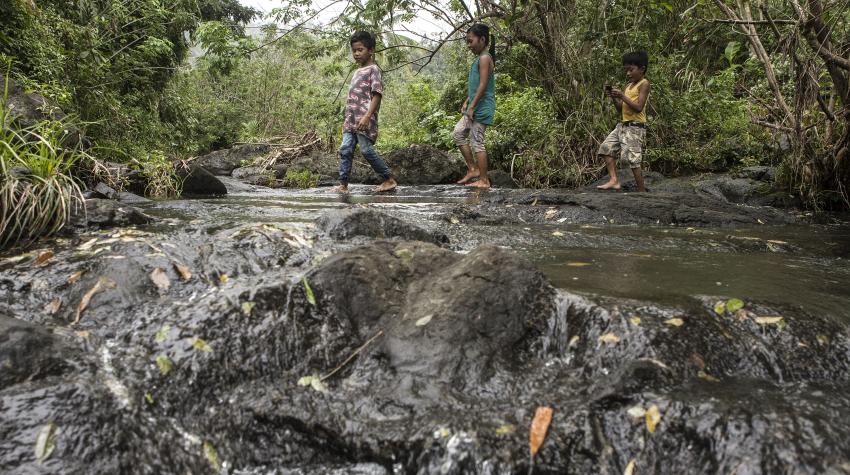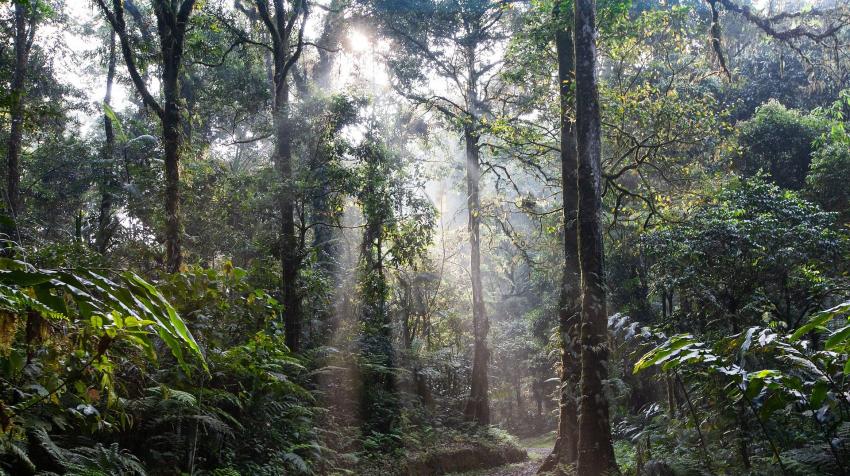Following the International Year of Forests in 2011, the United Nations General Assembly, in a December 2012 resolution, proclaimed 21 March of each year as the International Day of Forests. The Day celebrates and raises awareness of the importance of all types of forests through activities involving woodland environments and trees. Such events are held at the local, national and international levels across the world.
The International Day of Forests focuses on a specific theme each year. Given the effects of the COVID-19 pandemic and the fact that 2021 is the first year of the United Nations Decade on Ecosystem Restoration (2021-2030), the theme for this year’s celebration is “Forest restoration: a path to recovery and well-being”.
The impact of the COVID-19 pandemic on all of the Sustainable Development Goals (SDGs) has shown that what began as a global health emergency has quickly become a human and socioeconomic crisis. While the pandemic is jeopardizing progress towards implementation of the Goals, it also makes their achievement all the more urgent and necessary. This is where forests and forest restoration come in.
Healthy forests mean healthy people. Forests provide everyone with health benefits, including fresh air, nutritious foods, clean water and space for recreation. Worldwide, around 1 billion people depend to some extent on forest foods, such as wild meat, edible insects and plant products, mushrooms and fish.1 Some 2.4 billion people in both urban and rural settings use wood-based energy for cooking, and it is estimated that 1.2 billion people rely on agroforestry farming systems.2 When disaster strikes, crops fail or people lose their jobs, forests act as safety nets that can provide affected communities with food and income. Forests also help us adapt to and mitigate climate change, and serve as habitats for the vast proportion of terrestrial plant and animal species.
However, the world is losing 10 million hectares of forest—an area about the size of the Republic of Korea or twice the size of Costa Rica—each year through deforestation.3 Land degradation affects almost 2 billion hectares, an area larger than South America.4 This has many adverse effects. Forest loss and degradation are responsible for the emission of large amounts of climate-warming gases, and at least 8 per cent of forest plants and 5 per cent of forest animals are currently at extremely high risk of extinction.5 Degradation alone affects the well-being of 3.2 billion people and costs more than 10 per cent of the annual global gross product in lost ecosystem services.6
COVID-19 is a reminder that approximately 70 per cent of emerging infectious diseases, and almost all recent epidemics, originated in animals, especially wildlife.7 Nearly a third of emerging infectious diseases are linked to land-use change, such as deforestation.8
But we can recover from our planetary, health and economic crises. The restoration and responsible management of forests will address these crises simultaneously by re-establishing habitats, producing goods and services needed for sustainable development, and supporting economic recovery after COVID-19 through green jobs while increasing food security and improving human well-being.
The United Nations Decade on Ecosystem Restoration provides an opportunity to galvanize support for the restoration of degraded forest landscapes on a massive scale, thereby increasing ecological resilience and productivity, and contributing to many of the SDGs. Individual countries have already made commitments under the Bonn Challenge, which aims to restore 350 million hectares of degraded and deforested landscapes by 2030, and SDG 15, target 15.3, which calls for land degradation neutrality by 2030. Regional responses such as the Great Green Wall and the African Forest Landscape Restoration Initiative (AFR100), Initiative 20×20 in Latin America, and ECCA30 in Europe, the Caucasus and Central Asia are also underway.

It is important to remember that forest restoration is more than just planting trees. It’s about reinstating the balance of the ecological, social and economic benefits of forests and trees within a broader pattern of land use. In some cases, this is best achieved by assisting the natural regeneration of local plant species, while in others, the planting of trees and other vegetation helps speed up the process of restoring the health and productivity of degraded landscapes. The Great Green Wall is an example of the latter. With support from the Food and Agriculture Organization of the United Nations (FAO), some 63,000 hectares have recently been brought under restoration, benefiting 1 million people.9
Engaging and empowering people to restore, conserve and sustainably use forests is a key step towards positive change. Community empowerment helps advance local solutions and promotes participation in ecosystem restoration. This brings about an opportunity to “rebuild” forest landscapes that are equitable and productive, and that avert the risks to ecosystems and people posed by the destruction of our forests.
Done right, forest restoration is a key nature-based solution for building back better and achieving the future we want.
Happy International Day of Forests!
Notes
1 Food and Agriculture Organization of the United Nations and UN Environment Programme, The State of the World’s Forests 2020. Forests, Biodiversity and People (Rome, 2020), pp. xix, 62. Available at http://www.fao.org/documents/card/en/c/ca8642en.
2 Ibid., pp. xix, 59.
3 Ibid., pp. xvi, 13.
4 Food and Agriculture Organization of the United Nations, “International Day of Forests”, Key messages. Available at http://www.fao.org/international-day-of-forests/key-messages/en (accessed on 16 March 2021).
5 Food and Agriculture Organization of the United Nations and UN Environment Programme, The State of the World’s Forests 2020, pp. xvii, 51.
6 Food and Agriculture Organization of the United Nations, “New UN Decade on Ecosystem Restoration offers unparallel opportunity for job creation, food security and addressing climate change”, News, New York, 1 March 2019. Available at http://www.fao.org/news/story/en/item/1182090/icode.
7 Global Landscapes Forum, “Zoonotic diseases are on the rise, but preventing future pandemics is possible—how to support recovery in a post-COVID-19 world”, News, 28 October 2020. Available at https://www.globallandscapesforum.org/glf-news/zoonotic-diseases-are-on-the-rise-but-preventing-future-pandemics-is-possible-how-to-support-recovery-in-a-post-covid-19-world/.
8 Food and Agriculture Organization of the United Nations, “International Day of Forests”.
9 Food and Agriculture Organization of the United Nations, "Action against deforestation", Key results. Available at http://www.fao.org/in-action/action-against-desertification/en/ (accessed on 19 March 2021).
The UN Chronicle is not an official record. It is privileged to host senior United Nations officials as well as distinguished contributors from outside the United Nations system whose views are not necessarily those of the United Nations. Similarly, the boundaries and names shown, and the designations used, in maps or articles do not necessarily imply endorsement or acceptance by the United Nations.




